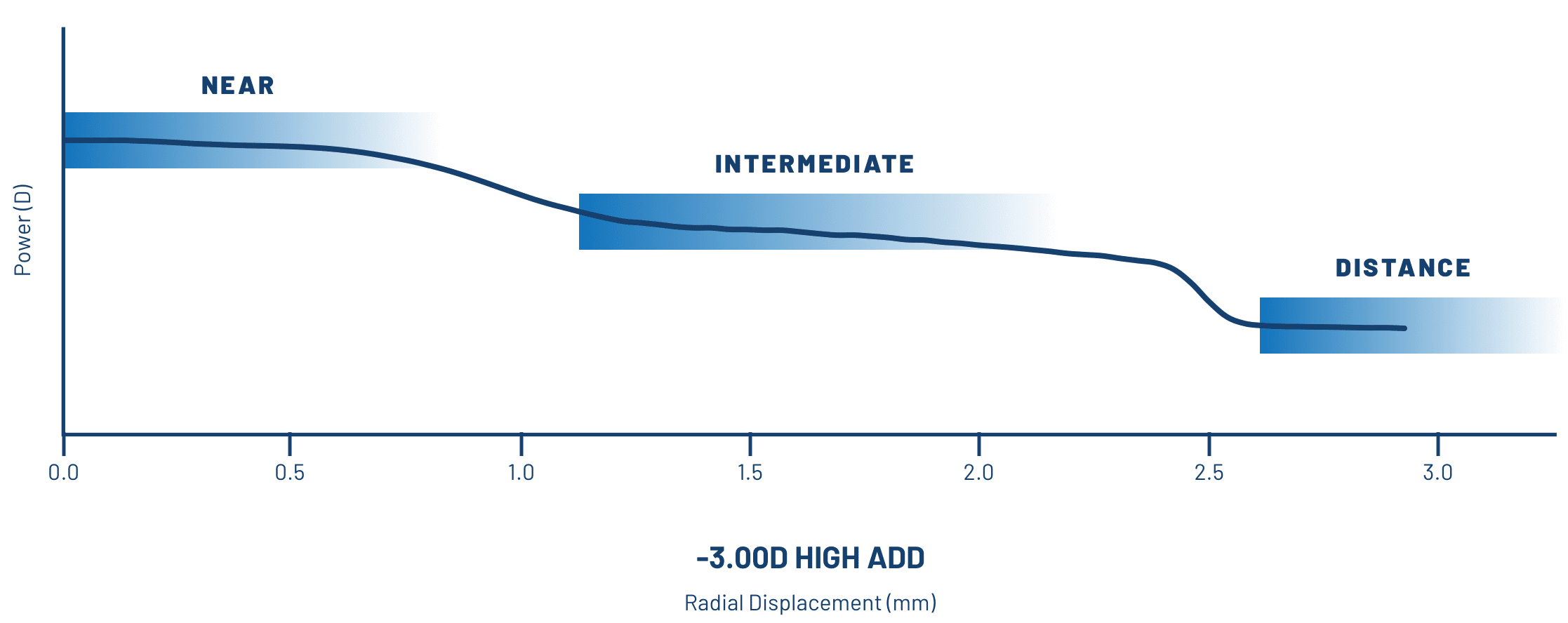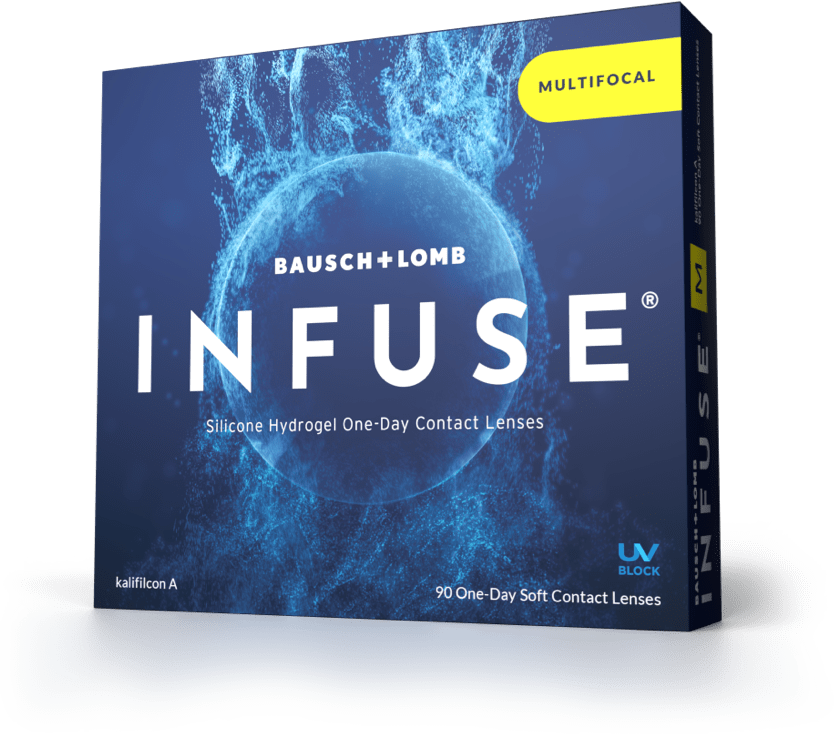
INFUSE® Multifocal is powered by
3-Zone Progressive™ Design
Our unique multifocal lens design is optimized for 7 biometrics, including pupil size, across 9 critical distances to deliver clear near and intermediate vision, while continuing to provide excellent distance vision1,2:


7 Biometric factors
Watch the sciencePupil size
Anterior chamber depth
Higher-order aberrations
Axial length
Corneal topography/
diameter (curvature)Residual accommodation
(across 9 distances)Subjective refraction
Just 2 ADD powers across the entire power
range for an easy, predictable fit:


Delivers outstanding vision at all distances—while helping to
minimize contact lens dryness for today’s presbyopic patients1
NEXT-GENERATION SILICONE
HYDROGEL MATERIAL
Exceptionally high moisture and Dk/t with a low modulus.1
ONLY CONTACT LENS FAMILY INFUSED WITH
BREAKTHROUGH PROBALANCE TECHNOLOGY®
Proprietary combination of osmoprotectants, electrolytes,
and moisturizers to help maintain ocular surface homeostasis.1
MULTIFOCAL CONTACT
LENS TECHNOLOGY
Learn more about the technology that powers all
Bausch + Lomb multifocal contact lenses.
EXPLORE INFUSE® ONE-DAY
MULTIFOCAL EVEN MORE
Understand how the lens meets the dynamic vision needs of today’s
presbyopic patients.
INFUSE® One-Day Multifocal contact lens parameters
ProBalance Technology®
(including plano)
(spectacle ADD)
High: +1.75D to +2.50D
(spectacle ADD)


*WARNING: UV-absorbing contact lenses are NOT substitutes for protective UV-absorbing eyewear such as UV-absorbing goggles or sunglasses because they do not completely cover the eye and surrounding area. The effectiveness of wearing UV-absorbing contact lenses in preventing or reducing the incidence of ocular disorders associated with exposure to UV-light has not been established at this time. You should continue to use UV-absorbing eyewear as directed. NOTE: Long-term exposure to UV radiation is one of the risk factors associated with cataracts. Exposure is based on a number of factors such as environmental conditions (altitude, geography, cloud cover) and personal factors (extent and nature of outdoor activities). UV-blocking contact lenses help provide protection against harmful UV radiation. However, clinical studies have not been done to demonstrate that wearing UV-blocking contact lenses reduces the risk of developing cataracts or other eye disorders.
†Terms and conditions apply. See Bausch + Lomb return policy for full details.
Also available in:

INFUSE® One-Day
A premium silicone hydrogel daily lens designed to help minimize contact lens dryness.
 Explore now
Explore now 
INFUSE® One-Day for Astigmatism
Provides optimal stability while helping to minimize contact lens dryness.1
 Explore now
Explore now MULTIFOCAL FITTING CALCULATOR + GUIDE
Use this tool to determine
which Bausch + Lomb
multifocal lenses to try first.
RECYCLE WITH
BAUSCH + LOMB
See how the ONE by ONE
Recycling Program works and
become a recycling center.
REFERENCES: 1. Data on file. Bausch & Lomb Incorporated. Rochester, NY. 2. Kingston AC, Cox IG. Predicting through-focus visual acuity with the eye's natural aberrations. Optom Vis Sci. 2013;90(10):1111-1118.


